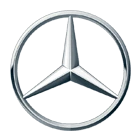Mercedes-Benz GLS Car Leasing
The Mercedes-Benz GLS is a large SUV, epitomising sophistication, comfort, and performance. As one of the largest SUVs in the Mercedes-Benz lineup, the GLS offers generous space and sets the standard for premium SUVs. But what else makes it stand out? Let delve deeper to find out.
Free Nationwide Delivery
We deliver to most places in mainland UK
Road Tax Included
Our lease deals come with road tax included
Consultative Approach
No pressure selling just honest advice
Mercedes-Benz GLS Lease Deals
View our latest Mercedes-Benz GLS lease deals below.
Vehicle
Monthly Lease
Mercedes-Benz GLS SUV GLS 450d 4Matic AMG Line Premium + 5dr 9G-Tronic
£1,465.69
inc VAT
View Deal
Mercedes-Benz GLS SUV GLS 450 4Matic AMG Line Premium + 5dr 9G-Tronic
£1,600.34
inc VAT
View Deal
Mercedes-Benz GLS SUV GLS 450d 4Matic Business Class 5dr 9G-Tronic
£1,602.24
inc VAT
View Deal
Mercedes-Benz GLS SUV GLS 450 4Matic Business Class 5dr 9G-Tronic
£1,781.47
inc VAT
View Deal
Mercedes-Benz GLS SUV GLS 63 4Matic+ Night Edition Executive 5dr TCT
£2,548.15
inc VAT
View Deal
Mercedes-Benz GLS SUV Maybach GLS 600 4Matic 5dr 9G-Tronic
£2,880.18
inc VAT
View Deal
Mercedes-Benz GLS SUV Maybach GLS 600 4Matic First Class 5dr 9G-Tronic
£2,945.70
inc VAT
View Deal
Mercedes-Benz GLS SUV Maybach GLS 600 4Matic Night Series 5dr 9G-Tronic
£3,325.68
inc VAT
View Deal
Mercedes-Benz GLS SUV Maybach GLS 600 4M 1st Class Night Srs 5dr 9G-Tron
£3,397.32
inc VAT
View Deal
Mercedes-Benz GLS Leasing
Designed to accommodate up to seven passengers in lavish comfort, the Mercedes GLS boasts a spacious and meticulously crafted interior. Premium materials, exquisite craftsmanship, and advanced features create an atmosphere of luxury, making every journey a delight for occupants. Furthermore, the GLS boasts a commanding presence on the road, with a bold exterior design characterised by a distinctive grille, and striking LED lighting elements. Its imposing stature not only exudes confidence and prestige but also ensures road presence and visibility.
In terms of practicality, the Mercedes-Benz GLS offers a range of features and capabilities tailored to meet the diverse needs of modern drivers and families. First and foremost, the GLS has ample storage solutions and up to 2,400 litres (with seats down). Also, this large SUV offers a towing capacity of up to 3,500kg. In summary, the Mercedes-Benz GLS represents the pinnacle of luxury SUVs, offering unparalleled comfort, performance, and technology in a versatile and refined package. This makes it a strong contender against rivals like the Volvo XC90 and BMW X7.
For our best rates on a Mercedes GLS lease, please contact us directly. To explore your Mercedes leasing options, call us on 0161 667 5338 or email us at [email protected]. At GB Vehicle Leasing, we have Mercedes GLS deals on a variety of contract terms and mileages to suit you. Discover more about car leasing today.
Part Exchange Your Old Car
Need to sell your old car? Part-exchanging eliminates the hassle of selling your old vehicle privately and dealing with potential buyers. Currently, we're one of the very few brokers that will accept a part exchange!
Mercedes-Benz GLS FAQs
Is the Mercedes-Benz GLS good on motorways?
Yes, the Mercedes-Benz GLS is well-suited for motorway driving. As a luxury SUV, the GLS offers a smooth and comfortable ride, making it ideal for long-distance journeys on motorways. Its spacious and well-appointed interior provides ample room for passengers to stretch out and relax. Additionally, the GLS boasts powerful engines and refined performance, allowing it to effortlessly cruise at high speeds on the motorway.
Does a Mercedes-Benz GLS lease come with maintenance included?
Vehicle maintenance can be added as an optional extra. If you would like to know how much a maintenance package will cost on a particular car, our leasing consultants are more than happy to look into this for you.
Is a credit check required to lease a Mercedes-Benz GLS?
Yes, a credit check is required as part of the leasing process. After you submit your finance application, lenders usually perform a credit check which helps to determine your reliability as a borrower. Typically, a credit score above 700 is regarded as a favourable starting point for vehicle leasing. If you have a low credit score, it’s a good idea to improve you credit score before applying for a car lease.
Latest Leasing News and Reviews
Keep up to date with the latest leasing news from GB Vehicle Leasing.











































